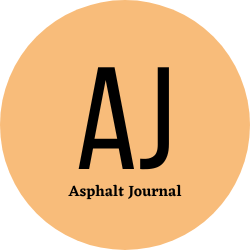Revitalizing Roads: A Deep Dive into Asphalt Repair Techniques by Asphalt Journal
by siteadmin

The constant wear and tear inflicted by weather, heavy traffic, and the passage of time take a toll on asphalt surfaces, necessitating regular maintenance and repair. In this in-depth exploration by Asphalt Journal, we will unravel the intricate world of asphalt repair, shedding light on various techniques, innovative solutions, and best practices that contribute to the restoration and preservation of our roadways.
The Need for Asphalt Repair
Understanding the factors that contribute to the deterioration of asphalt is crucial in appreciating the significance of repair efforts. From the effects of freeze-thaw cycles and water infiltration to the impact of heavy vehicles and UV rays, asphalt is constantly under assault. Identifying signs of distress such as cracks, potholes, and surface irregularities is the first step in recognizing the need for timely repairs.
Crack Sealing and Filling Techniques
Cracks are among the most common issues that plague asphalt surfaces, providing a gateway for water infiltration and further damage. Crack sealing and filling techniques are fundamental in preventing the progression of cracks into more severe structural issues. This involves the application of specialized sealants or fillers that adhere to the crack surfaces, preventing the entry of water and debris and thereby preserving the structural integrity of the pavement.
Pothole Patching Strategies
Potholes are a notorious nuisance on roadways, posing safety risks and causing vehicle damage. Efficient pothole patching is essential to rectify these issues promptly. Various methods, including cold patching and hot mix asphalt patching, are employed based on the scale and urgency of the repair. Understanding the intricacies of each method allows for strategic decision-making to ensure a durable and long-lasting pothole repair.
Infrared Asphalt Repair Technology
Infrared asphalt repair has emerged as a cutting-edge technology revolutionizing the way we address asphalt distress. This technique utilizes infrared heaters to heat the existing asphalt surface, making it workable for reprocessing. The rejuvenated asphalt can then be re-leveled and compacted, seamlessly blending with the surrounding pavement. Infrared repair not only offers a more sustainable solution but also reduces waste and minimizes disruptions to traffic.
Rehabilitation vs. Reconstruction: Choosing the Right Approach
When faced with extensive asphalt damage, the decision between rehabilitation and reconstruction becomes pivotal. Rehabilitation involves restoring the existing pavement through techniques like resurfacing or overlay, while reconstruction involves complete removal and replacement. Factors such as the extent of damage, budget constraints, and traffic considerations play a role in determining the most suitable approach. Striking a balance between cost-effectiveness and long-term durability is key to making informed decisions in asphalt repair projects.
Asphalt repair is a multifaceted endeavor that demands a nuanced understanding of distress mechanisms, coupled with a diverse set of techniques and technologies. This comprehensive exploration by Asphalt Journal aims to provide insights into the intricacies of crack sealing, pothole patching, infrared repair, and the decision-making process between rehabilitation and reconstruction. As we navigate the challenges of maintaining and preserving our roadways, staying informed about these repair strategies ensures that our infrastructure remains safe, efficient, and resilient in the face of the elements and daily traffic demands.
The constant wear and tear inflicted by weather, heavy traffic, and the passage of time take a toll on asphalt surfaces, necessitating regular maintenance and repair. In this in-depth exploration by Asphalt Journal, we will unravel the intricate world of asphalt repair, shedding light on various techniques, innovative solutions, and best practices that contribute to…
Recent Posts
- Innovation Tree Service of Irvine Unveils Premium Tree Cutting Services
- Stucco Repair Philadelphia Brings Top-Notch Solutions to Philadelphia Homeowners
- The Trusted Name in Roofing Services Expands to Columbus, GA
- Gateway Plumbers of Aurora: The Trusted Name in Water Heater Repair
- Oasis Landscaping of Harrisburg Enhances Outdoor Spaces in Harrisburg with Expert Landscape Lighting Solutions
